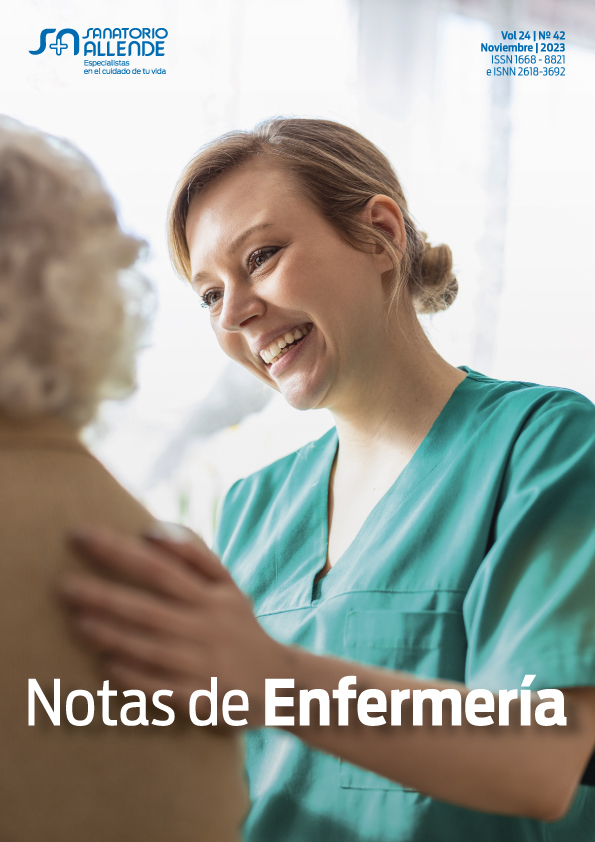Use of ICTs for the managem ent of cardiovascular diseases
DOI:
https://doi.org/10.59843/2618-3692.v24.n42.42956Keywords:
Information Technology Management, Cardiovascular Diseases, Aged, Mobile Applications, Chronic Disease, Treatment Adherence and ComplianceAbstract
Are mobile applications effective in adults with cardiovascular diseases to improve their control? As is known, the older population considers the progress of society and its adaptation to the changes it involves to be a determining obstacle, which refers to the importance of seeking new tools that facilitate this adaptation, even more so when their health depends on This is when they have to face the control of chronic diseases and a lot of care. This article will answer this question through a systematic bibliographic review using search strategies in recognized databases such as Pubmed and Scielo of previous articles focused on the use of ICTs in disease control. Finally rescuing 6 articles that show positive results in improving the state of health and/or adherence to treatment of patients controlled in their studies, discussing factors that could improve their results in studies in which they were not significant, assessing limitations and recommendations for future studies, finally inviting the population to improve the study of the adult and elderly population, and to search for tools that allow them to improve their health, as well as in the case of ICTs that are a great help to improve the control of these, by verifying that they do not generate any risk for those who use them, does not interfere with traditional pharmacological therapy and only refers benefits despite the accessibility limitations that can be easily controlled.
Downloads
References
González de León B., León Salas B., Del Pino-Sedeño T., Rodríguez-Álvarez C., Bejarano-Quisoboni D., Trujillo-Martín M.M. Aplicaciones móviles para mejorar la adherencia a la medicación: revisión y análisis de calidad. Aten. Primaria [Internet]. 2021 [citado el 14 de julio de 2023];53(9):102095. Disponible en: http:// dx.doi.org/10.1016/j.aprim.2021.102095
Persell S.D., Peprah YA, Lipiszko D., Lee J.Y., Li J.J., Ciolino J.D., et al. Effect of home blood pressure monitoring via a smartphone hypertension coaching application or tracking application on adults with uncontrolled hypertension: a randomized clinical trial: a randomized clinical trial. JAMA Netw Open [Internet]. 2020 [citado el 14 de julio de 2023];3(3):e200255. Disponible en: https://pubmed.ncbi.nlm.nih. gov/32119093/
Huang Z., Tan E., Lum E., Sloot P., Boehm B.O., Car J. A smartphone app to improve medication adherence in patients with type 2 diabetes in Asia: feasibility randomized controlled trial. JMIR M.Health U.Health [Internet]. 2019 [citado el 14 de julio de 2023];7(9):e14914. Disponible en: https://pubmed.ncbi.nlm.nih.gov/31516127/
Morawski K., Ghazinouri R., Krumme A., Lauffenburger J.C., Lu Z., Durfee E., et al. Association of a smartphone application with medication adherence and blood pressure control: The MedISAFE-BP randomized clinical trial. JAMA Intern. Med. [Internet]. 2018 [citado el 14 de julio de 2023];178(6):802. Disponible en: https://pubmed.ncbi.nlm.nih.gov/29710289/
La OMS publica un nuevo compendio de tecnologías sanitarias innovadoras para la COVID-19 y otras enfermedades prioritarias [Internet]. Who.int. [citado el 14 de julio de 2023]. Disponible en: https://www.who. int/es/news/item/31-08-2021-who-releases-new-compendium-of-innovative-health-technologies-for-covid19-and-other-priority-diseases
Manterola, C., Asenjo-Lobos, C. & Otzen, T. (2014). Jerarquización de la evidencia: niveles de evidencia y grados de recomendación de uso actual. Revista chilena de infectología, 31(6), 705-718. https://doi.org/10.4067/s071610182014000600011
Observatorio del envejecimiento para un Chile con futuro. (2021). Uso de Medicamentos y Polifarmacia en Personas Mayores. Pontificie Universidad Católica. https://observatorioenvejecimiento.uc.cl/wp-content/ uploads/2021/08/Reporte-Observatorio-Uso-de-medicamentos-y-Polifarmacia-en-personas-mayores.pdf
Oliveira, F. M. D., Procópio Calliari, L. E., C. Kauffman Rutenberg Feder & M.F. Ozorio de Almeida, M. Vilela Pereira, M. T. Teixeira de Almeida, Fa. Alves, S. A. Días García, L.D. Donizeti Reis, J.E. Nunes Salles. (2021). Efficacy of a glucose meter connected to a mobile app on glycemic control and adherence to self-care tasks in patients with T1DM and LADA: a parallel-group, open-label, clinical treatment trial. Scielo. https://www.scielo.br/j/ aem/a/fBdjhJ7TFRPvVN5mYqRn78B/?lang=en
R. W. Treskes, L. AM van Winden, N. van Keulen, E.T. van der Velde, SLMA Beeres, D.E. Atsma, M.J. Schalij. (2020). Efecto de los dispositivos de monitoreo de salud habilitados para teléfonos inteligentes frente al seguimiento regular en el control de la presión arterial entre pacientes después de un infarto de miocardio: un ensayo clínico aleatorizado. Pubmed. https://pubmed.ncbi.nlm.nih.gov/32297946/
Smartpatient. (s. f.). Los medicamentos no le ayudan si no los toma. MyTherapy. https://www.mytherapyapp.com/es
Y. Yang, E. Young Lee, H. Kim, S. Lee, K. Yoon, J. Cho. (2020). Efecto de un sistema de retroalimentación y monitoreo de glucosa basado en teléfonos móviles para el manejo de la diabetes tipo 2 en entornos clínicos de atención primaria múltiple: ensayo controlado aleatorio grupal. Pubmed. https://pubmed.ncbi.nlm.nih.gov/32130172/
Tipos y utilidades de las aplicaciones móviles de salud [Internet]. Salud Conectada. 2016 [citado el 14 de julio de 2023]. Disponible en: https://saludconectada.com/1-4-tipos-utilidades-las-aplicaciones-moviles-salud/
Santamaría-Puerto G., Hernández-Rincón E. Mobile Medical Applications: definitions, benefits and risks. Salud Uninorte [Internet]. 2015 [citado el 14 de julio de 2023];31(3):599–607. Disponible en: http://www.scielo. org.co/scielo.php?script=sci_arttext&pid=S0120-55522015000300016
La revolución del mHealth en salud: de las apps al dato de salud integrado [Internet]. ehCOS. NTT DATA; 2018 [citado el 14 de julio de 2023]. Disponible en: https://www.ehcos.com/la-revolucion-del-mhealth-en-salud/
mHealth: todo lo que debes saber sobre la salud móvil [Internet]. Ambit-bst.com. [citado el 14 de julio de 2023]. Disponible en: https://www.ambit-bst.com/blog/mhealth-todo-lo-que-debes-saber-sobre-la-salud-m%C3%B3vil
Downloads
Published
How to Cite
Issue
Section
License
Copyright (c) 2023 Sanatorio Allende

This work is licensed under a Creative Commons Attribution-NonCommercial 4.0 International License.
Those authors who have published with this journal, accept the following terms:
- Attribution — You must give appropriate credit, provide a link to the license, and indicate if changes were made. You may do so in any reasonable manner, but not in any way that suggests the licensor endorses you or your use.
- NonCommercial — You may not use the material for commercial purposes.

